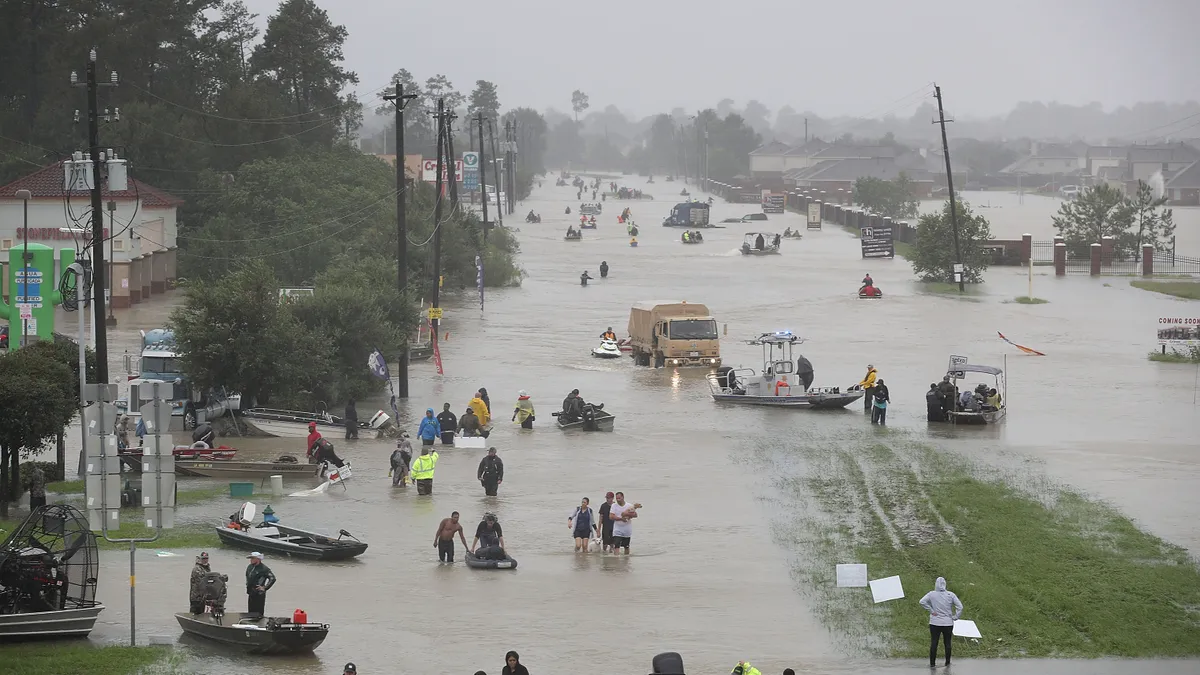Harvey, Irma, Maria and Nate. Four 2017 hurricanes that were so destructive that the U.N. World Meteorological Organization (WMO) has retired their names. The four storms devastated portions of Texas (Harvey), Florida (Irma), Puerto Rico (Maria) and the Caribbean (Nate), leaving massive power outages, severe flooding and death in their wake.
According to the Washington Post, final costs may not be known for years, but estimates suggest the tab will far exceed $200 billion.
Now Hector has grown to a Category 3 hurricane as it moves close to Hawaii in the Pacific Ocean.
Planning for the 'not if, but when' scenarios
The number and intensity of the storms can vary, but their occurrence should never be a surprise, Rod Daugherty, VP Product Strategy at Atlanta-based Blue Ridge, told Supply Chain Dive.
"We know there are going to be hurricanes in the fall," he said. "It’s not if, but when. My whole summer is [spent] doing logistics to move products from the Gulf Coast and out of harm’s way. In the manufacturing sector, for example, you have to move your supply chain so you don’t lose inventory."
Physical sites such as factories, warehouses and chemical plants can’t be moved, but transportation companies have assets that can be relocated. As soon as they know where the storm will hit landfall, equipment must be moved.
"It really comes down to better planning," Daugherty said, "so that they don’t lose tractors and trailers and have them ready to go when [the storm] passes."
Sometimes, though, emergency response measures lead to another supply chain delay, Daugherty said. When Houston got hit so severely during Harvey, all the loads that could be trucked in or out, were. But in a ripple effect, a driver shortage resulted elsewhere. It had nothing to do with the hurricane geographically, but receiving was off course because of all the drivers hauling to and from Houston after the storm.
How Home Depot used its supply chain for island relief
Daugherty’s colleague, Blue Ridge Chief Data Scientist Rajesh Veliyanallore, pointed out that the major players will always have a strategy. "Walmart has a group that just does this. They can predict and pre-position some inventory at stores, move some to a safe zone, then rush it to the stores after the hurricane passes by."
Home Depot, for example, will make sure that such emergency items as batteries, flashlights and plywood for boarding up windows is plentiful at stores in the hurricane’s path.
Since October of this year, Home Depot has sent 6,900 containers to Puerto Rico and the U.S. Virgin Islands, including emergency relief supplies and rebuilding materials.
Initial Home Depot shipments to the Caribbean contained critical necessities like batteries, flashlights, tarps, chainsaws and inflatable beds. Power generators and bottled water are still high in demand. Because Puerto Rico’s infrastructure took such a beating, fuel also is a necessity to keep trucks and generators running.
"What we’ve learned is that the Islands are a different animal," a Home Depot spokesperson told Supply Chain Dive. “We need to do more forecasting and more stockpiling of goods. We’ve also increased the number of distribution centers (DCs) serving the Islands from three to five." To meet demand Home Depot increased staffing at the DCs and the on-island stores.
Another key point, the spokesperson added, is communication with carriers and online providers. "We leveraged all those relationships to get emergency relief and goods to the Islands. We’re in constant communication with them and when we spot a storm, we’ll be ready to jump on it."
In crisis mode, communication must be a 'two-way street'
Clear and immediate communications is vital, Jon Slangerup, Chairman and CEO at American Global Logistics, told Supply Chain Dive, calling it "a two-way street" between customer and 3PLs or other business partners. "They share their experience with their providers. How do they deal with backup power? How do they deal with the labor impact when families are homeless and require assistance?"
Slangerup said that those in harm’s way usually have a diversion strategy in place, however, “there also are some with very little knowledge of their supply chain. We work at different levels. As a 4PL, we manage [clients’] 3PL networks. We map and plan their supply chain, giving us visibility into it," including transportation networks, warehouse optimization, cargo diversion or delays, keeping containers at ports until the situation is normalized.
FM Global, a two-century old commercial and industrial property insurer surveyed 101 senior financial executives at Fortune 1000 organizations just after hurricane season. Sixty-four percent of the respondents said the hurricane season had an adverse impact on their business, and among those impacted, 62% they were not completely prepared to deal with the effects.
"Those who cannot remember the past are condemned to repeat it," philosopher George Santayana famously said. And since hurricane season is a regularity, each year can be a learning experience, Slangerup said.
"I think that the more experience you have with these kinds of events, the better you are with planning. Until it hits you, you never understand. When you’re in harm’s way, think it through as much as you can and look at all of your resources to get through," he said.





















